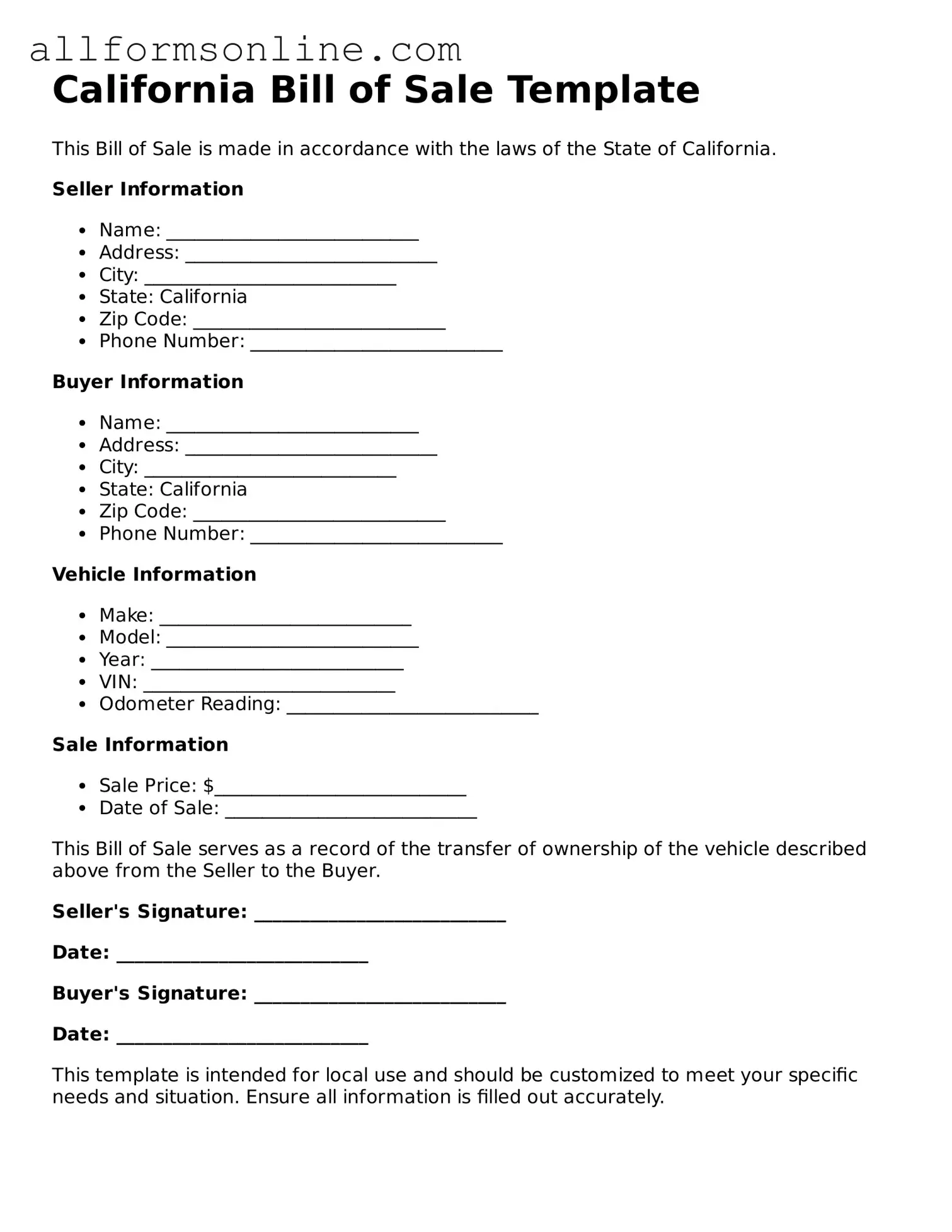What is a California Bill of Sale form?
A California Bill of Sale form is a legal document that records the transfer of ownership of personal property from one party to another. This form is particularly important for transactions involving vehicles, boats, and other significant assets. It serves as proof of the sale and includes details such as the names and addresses of the buyer and seller, a description of the item being sold, the sale price, and the date of the transaction. Having a Bill of Sale can protect both parties in case of disputes or legal issues in the future.
Is a Bill of Sale required in California?
While a Bill of Sale is not legally required for every transaction in California, it is highly recommended, especially for the sale of vehicles or high-value items. For vehicle sales, the California Department of Motor Vehicles (DMV) requires a Bill of Sale when transferring ownership. This document helps to ensure that the transaction is properly documented and can assist with registration and title transfer processes. Without it, you may face complications down the line.
What information should be included in a California Bill of Sale?
A comprehensive California Bill of Sale should include several key pieces of information. First, include the full names and addresses of both the buyer and the seller. Next, provide a detailed description of the item being sold, including its make, model, year, and any identification numbers, such as a Vehicle Identification Number (VIN) for cars. The sale price must also be clearly stated, along with the date of the transaction. Finally, both parties should sign and date the document to validate the agreement.
Can a Bill of Sale be used as a receipt?
Yes, a Bill of Sale can serve as a receipt for the transaction. Once both parties have signed the document, it acts as proof that the buyer has purchased the item and that the seller has received payment. This is particularly useful for tax purposes and can help both parties keep accurate records of their transactions. Retaining a copy of the Bill of Sale is advisable for future reference and to protect your interests.
